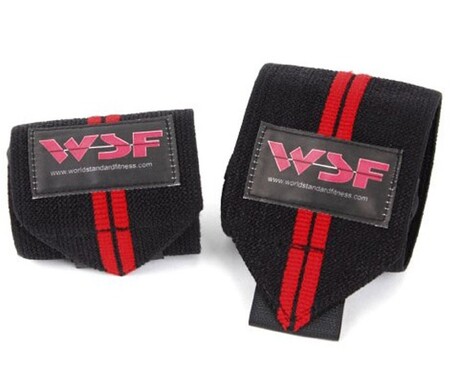The World's Best Lifting Straps - How It All Began...
In 2001, World Standard Fitness (WSF) invented the rubberised lifting strap (AKA non-slip lifting strap). This patented innovation fundamentally changed one of the most commonly used weightlifting aides in the world.
Invented by a competitive lifter, this innovation quickly grew in popularity from a cult-like status to setting the standard in the industry, hence the name World Standard Fitness. When you see a user, ask them why they prefer GRIPTECH®.
What Rival Brands Grizzly and Harbinger Think of WSF
In 2002 WSF put its first product, the patented nonslip lifting strap, into the market, and the industry hasn't been the same since!
Lifters sought them, media wrote about them, and some of the largest manufacturers in the industry had this to say about them:
E-mail excerpt from Andrew Riding of Grizzly (2005):
"Remember, the choice is ultimately yours as this is your baby. I personally like your product and think that we can grow it for you."
E-mail excerpt from Michele Gaedke of Harbinger (2006):
"It's quite a novel concept and one that obviously has great merit. I can see why you have had interest in this product."
The Patented Rubberising Process
WSF founder and nonslip strap inventor James McBride tested numerous ways of rubberizing a variety of lifting strap materials in 2001 with the intent of improving his own performance. It was through countless hours of testing that he was able to weed out inferior methods such as gluing and weaving.
In fact weaving, though cheap to manufacture by comparison, was such a let down in performance that James spent countless hours hand painting thousands of straps for the first couple of years in business, rather than use it.
The fibers in a webbing are similar to the links in a chain, and so naturally, replacing strong nylon fibers with far weaker rubber fibers affects the webbing's integrity. The thin rubber woven fibers were prone to tearing, and weaving resulted in less nonslip material being applied to the surface of the strap, and thus less grip for the user. Although it took him longer to produce than it would have had he used the inferior methods, James wanted to make sure that everyone could enjoy the same high performance nonslip strap that he created for himself. Through further refinement he eventually found the ideal means of "rubberizing" that we use to this day.




